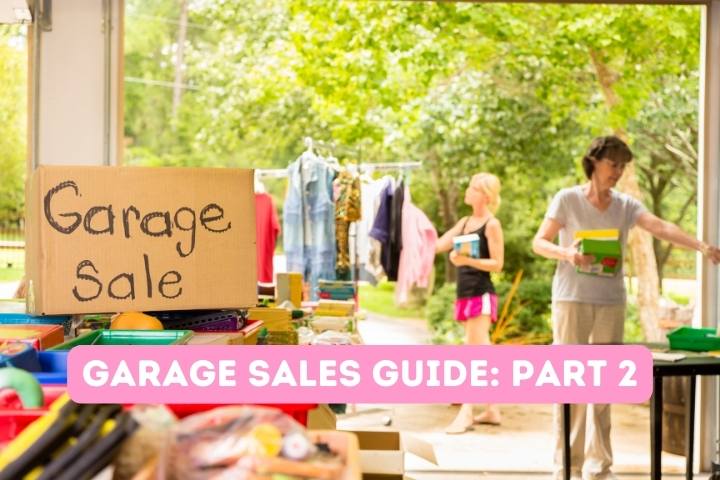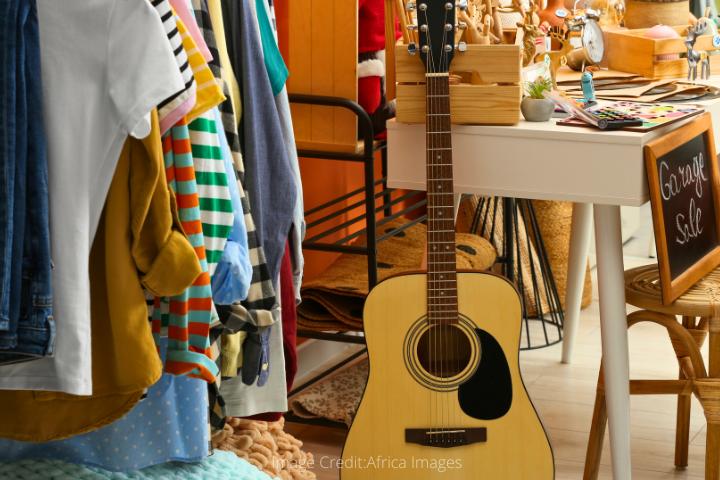
In the previous post, there were tips on how to prepare for garage sales. Now that you know how to find garage sales, what to bring, how to dress, and how to prepare, let’s move on to the art of negotiation.
In Part 2 of this guest post, you’ll learn some smart strategies on how to negotiate for the best price. Also, there are some do’s and don’ts to keep in mind so that you don’t offend the seller.
After all, you want them to like you so that you’ll improve your chance of negotiating a better deal.
The Art of Negotiation
1. Be respectful
You’re are visiting someone else’s property. You are looking through their things. Some things might have sentimental value. Remember that. Be respectful.
In some cases, the actual owner of the items may be deceased, and perhaps recently deceased. Don’t laugh or joke about an item unless the seller/owner initiates the laughing and joking! “That’s really interesting — what’s the story on this?” is far more respectful than “What are you supposed to do with that?”
Also, be respectful of the seller/owner’s pricing. If you ask a price and the owner says, “$10,” don’t offer a quarter or a nickel. That’s an extreme example, but don’t be insulting with what you are offering.
2. Small talk can be good
These people may be your close neighbors and/or friends of friends. You may shop in the same stores, eat in the same restaurants, cheer for the same sports teams. Garage sales are a great way to meet your neighbors and to learn more about your neighborhood.
Engage in a conversation. Learn something about your community and make friends while you shop. Sellers may be more open to good deals if they like you as a person and if you seem interested in what you’re buying.
It’s human nature: They want their stuff to be appreciated and to have a good home. If they like you, they’re probably more likely to cut you a deal.
3. Buy it by the bag (or box)
If you’re going to be buying several items, one negotiating strategy is to place them all in a bag or box and bring them to the owner/seller. “What do you want for all of these?”
They may just take a quick look and give you a great deal, or they may want to pull out each item, piece by piece, and set a price higher than you were willing to pay. If it’s too high, then you can take out the items you weren’t as interested in, and say, “How much for just these?” or “How much for this one?”
4. How much for the big one?
If you want to test the seller’s pricing strategy, ask how much the seller wants for a deluxe item — one that you don’t have much interest in. Then, you can work your way down to the smaller, presumably less costly item you actually want to buy. For example, there may be three paintings: one giant, one medium and one small — and you want the small one. First ask for the price on the giant one, then on the medium one, then on the small one.
5. Be generic
Ask for prices on a few things that are somewhat related but that you may not have much interest in, and then — almost in passing, say, “What about this?” Of course, you may know exactly what the item is, but if you sound too expert the seller may worry that he or she is about to part with something of real value.
For example, if you as the buyer said, “Wow! What about this super-rare Mickey Mantle Topps rookie card in mint condition … how much do you want for this gem?!” vs. “How much for your sports cards?” you may get some different pricing.

6. Make an offer before the seller does
The seller is ultimately holding the sale because the seller wants to get rid of stuff. (OK, and make some cash, too.) By asking, “Would you take $3 for this?” The seller knows that the sale may be lost if the seller suggests a higher price than what the buyer is offering.
Also, the seller is getting a sense for the actual market for the items, versus what they think the items are worth. And if the seller does ask for more, the buyer can counter with, “OK, but would you throw in something else for that amount?”
Alternatively, if the buyer asks the seller, “How much do you want for this?” and the seller tosses out a much higher amount than the buyer wishes to pay, it may be difficult to talk the seller way down from that initial price to the price the buyer really wanted to pay.
7. Half off
Having experienced garage sales from the perspective of seller and buyer — and this is not a hard and fast rule — sellers may have a comfort level in selling items for up to about half of the listed or spoken price. This, of course, varies by the individual.
And if a seller is firm that “this is the price” for a particular item, then don’t argue or continue to press the seller to drop the price on that item — it’s time to look for other items that you can pile on to the sale in hopes of getting good deals on other items the seller is less attached to.
Another strategy: Say in a friendly way, “OK if I check in later today on it?” The seller may be more receptive to getting rid of it for a lower price after spending a day in the sun and facing the prospect of having to pack up everything that didn’t sell.
8. Dawn vs. dusk pricing
In my experience, early birds may not get the best deals, though they may get first chance to buy items that they are really serious about. It’s a good strategy — particularly when sellers have an abundance of items that don’t seem to be selling — to show up late in the day, toward the end of the sale. This is the “Goodwill hunting” phase of garage sales.
In some cases, it’s the seller’s last chance to sell items before they take the leftovers to the dump or to the local thrift store. Some sellers will even begin a “Free” pile of stuff at the curbside. Here again, be respectful — don’t rummage through the free stuff too late at night or too early in the morning, as it may be disruptive and you definitely don’t want to rile the local neighborhood watch crew.
9. Garage sale karma
Don’t ever sneak extra items into a bag or box. Don’t say you have a stack of six books when you have seven or eight. If you find an old watch in a coat you’re buying or just bought, do the right thing — give it back to the seller. Garage sale karma is a powerful thing.
You want buyers to be straight with you when you are hosting your own sale. If you get in the car and see one of your kids has grabbed an extra action figure that you didn’t pay for, go back, tell the seller and offer to give it back or to pay for it — chances are the seller will laugh and say, “Don’t worry about it — take it.” But at least you are parting with a clear conscience.
This is a guest post from the 98bottles.com blog.
